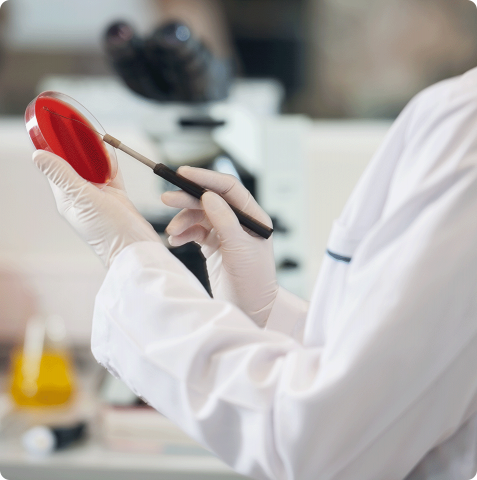Group B Strep Screening Test
Group B Streptococcus (GBS) is commonly found in the gastrointestinal tract of men and women and colonises the vagina in approximately 15% to 30% of women.
The danger to babies is that GBS bacteria is able to make microscopic holes in the amniotic sac, enabling it to reach the amniotic fluid and infect the baby. GBS is the most common cause of overwhelming sepsis in newborn babies, including pneumonia and meningitis with an incidence of 1 per 1,000 live births.
80% of infections are early onset, most of which are observable at or immediately after birth. 18% of premature babies with early onset GBS infection die and 6% of babies born at full term die. Babies that survive, particularly those who have meningitis, may have long-term problems, such as hearing (5%) or vision loss or learning disabilities.
Late onset of GBS infection occurs between 7 and 90 days after the birth, with the baby acquiring infection at a later stage.
Screening of pregnant women for GBS carriage is offered routinely in Australia, though not in all developed countries.
What does the screening test involve?
It is offered as close to the birth as possible, usually between 35 and 37 weeks’ gestation. A swab of the vagina is performed either by the woman herself or by her caregiver, and sent to pathology laboratories for analysis. Swabs taken at this time are effective in predicting whether or not there will be GBS carriage during labour.
How is GBS treated?
GBS carriage is not treated during pregnancy, but at the onset of labour using intravenous antibiotics, ideally at least 4 hours prior to the birth and 4 hourly after the first dose.
Advantages of screening and treatment
The administration of intravenous antibiotics in labour for women who are GBS carriers, reduces the occurrence of early GBS infection for 1 in 25 babies, though the research is over 20 years old and of poor quality. Antibiotic treatment does not have any effect on neonatal deaths from infection.
Disadvantages of screening and treatment
- Very few of the women in labour who are GBS positive give birth to babies who are infected with GBS
- A systematic review of the best research into antibiotics given in labour for the reduction of GBS infection in babies, found that the treatment did not have any effect on neonatal deaths from infection (Ohlsson et al. 2013).
- Antibiotics can have harmful effects such as severe maternal allergic reactions, increase in drug-resistant organisms and exposure of newborn infants to resistant bacteria, and postnatal maternal and neonatal yeast infections.
- If a woman is GBS+ some hospitals, midwives and doctors, may recommend immediate induction if the membranes rupture before labour begins, and may recommend placing a time limit on the labour.
- A woman planning to give birth at home may need to change her birth place if she wishes to opt to receive antibiotics during labour.
Alternatives:
- There is some evidence that intramuscular antibiotic treatment may be effective in preventing the communication of infection to the baby, but this is limited.
- Not all caregivers offer routine screening for GBS. Some only recommend treating women who have recognised risk factors for early-onset GBS disease. These risk factors are: maternal fever, prolonged rupture of membranes, prolonged labour, prematurity and low birth weight, a previous baby affected by GBS disease, being a known carrier of GBS during the current pregnancy, GBS urine infection during the current pregnancy, severe changes in the baby’s heart rate during the first stage of labour, and gestational diabetes
References
- National Institute for Health and Clinical Excellence (2008). Clinical Guideline: Antenatal care routine care for the healthy pregnant woman. National Collaborating Centre for Women’s and Children’s Health. Available online at http://www.nice.org.uk/nicemedia/live/11947/40145/40145.pdf [Accessed on 25 March 2014]
- Ohlsson, A., Shah, V.S. (2013). Intrapartum antibiotics for known maternal Group B streptococcal colonization. Cochrane Pregnancy and Childbirth Group. Published Online: 31 January 2013. Available online at http://onlinelibrary.wiley.com/doi/10.1002/14651858.CD007467.pub3/abstract [Accessed on 25 March 2014].

